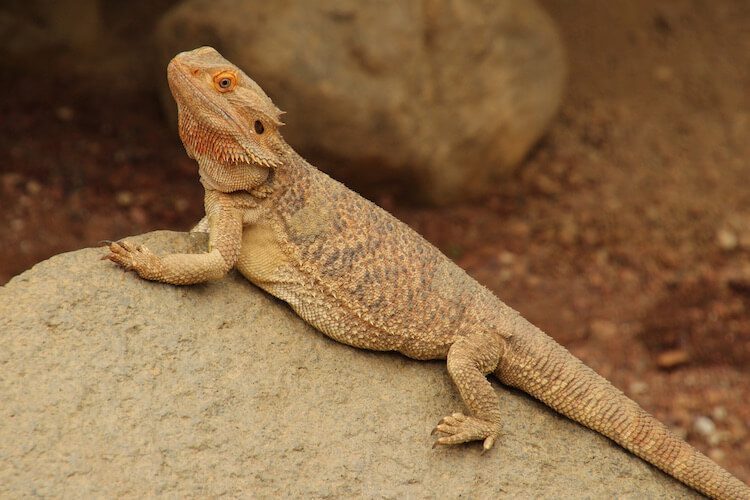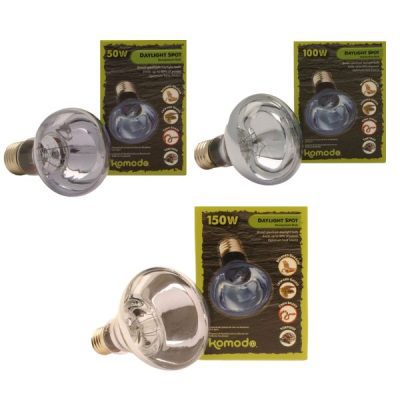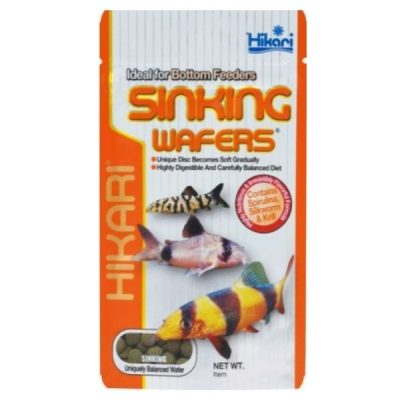Bearded Dragon
Housing
Bearded dragons are large and active lizards. Being diurnal, they are active for both day and night. An adult needs a large vivarium of more than three foot. Youngsters can be started in a smaller vivarium (36 x 18 x 18”). Providing the correct temperatures can be maintained, glass or wooden enclosures can be used. Beardie Life substrate is recommended.
Heating
Temperature is very important in reptile care as they cannot produce their own body heat and need to be kept within a suitable range for their body to function correctly.
We recommend a temperature range of 35-40°C in the basking area, down to approximately 26-28°C in the cooler area. This will provide the dragon with a temperature gradient across the vivarium.
As beardies are basking lizards, they are best heated using white spotlights to create a suitable basking spot. Any heat source should be controlled by using a good quality thermostat. It is very important to know what the temperature is, so check regularly with an accurate thermometer.
Lighting
Bearded dragons require UV light to help them absorb calcium for their diet and prevent metabolic bone disease. They cannot be maintained successfully without proper UV lighting. UV lights should be mounted according to the manufacturer’s directions. It is recommended to replace UV lights every 6-12 months as the UVB output will decline over time. Even if the light still works it may be out of UVB. At least 12% UVB is required.
Basking lights are also important to provide heat. Constant heat that’s controlled via a thermostat is ideal for a Bearded Dragon.
Water
It is important to provide your dragon with fresh water every day. Do not make the substrate too wet as this can raise the humidity and may cause respiratory problems.
Hides and Decoration
A bearded dragon requires a few branches and rocks to climb on. This allows them to thermoregulate more effectively and adds interest to the environment. The vivarium can be decorated with plastic plants as these looks very attractive and offer some privacy. Live plants, however, are a poor choice, as the heat will kill them very quickly and the dragon and the crickets will eat them.
A suitable nesting box should be provided when keeping a female bearded dragon. It needs to be large enough for the dragon to get fully in and dig around in and should be filled with a damp mix of coconut fibre substrate and sand.
Feeding
Bearded dragons are omnivorous, so require a mixed diet of insects and salad. Try to offer a variety to keep a balanced diet. Salads should be offered every day.
Beardies will eat crickets, locusts, morio-worms, mealworms, and wax worms. Crickets and locusts should be used as the main foods, as they are lower in fat than wax worms and easier to digest than mealworms. Regular use of vitamin/mineral supplements is very important to prevent problems such as Metabolic Bone Disease, which is caused by calcium deficiency.
Younger bearded dragons should be fed 80% insects and 20% salad. From 1 year of age, this changes to 50% insects and 50% salad. Treats of mealworms and wax worms can be offered occasionally. Young beardies should be fed everyday.
Maintenance
A bearded dragon can produce quite a lot of waste so the enclosure should be cleaned regularly. Clean and refill the water bowl daily. We recommend spot cleaning the enclosure daily and cleaning the substrate each month. Wash and disinfect the vivarium with a reptile safe disinfectant.
Bearded dragons require regular baths in lukewarm water, too.
For any further information or advice please feel free to message us on Facebook or contact the store on 01902 494860









